Practicing Harp Happiness
#095: Freedom to Fly: Four Keys to Finger Facility
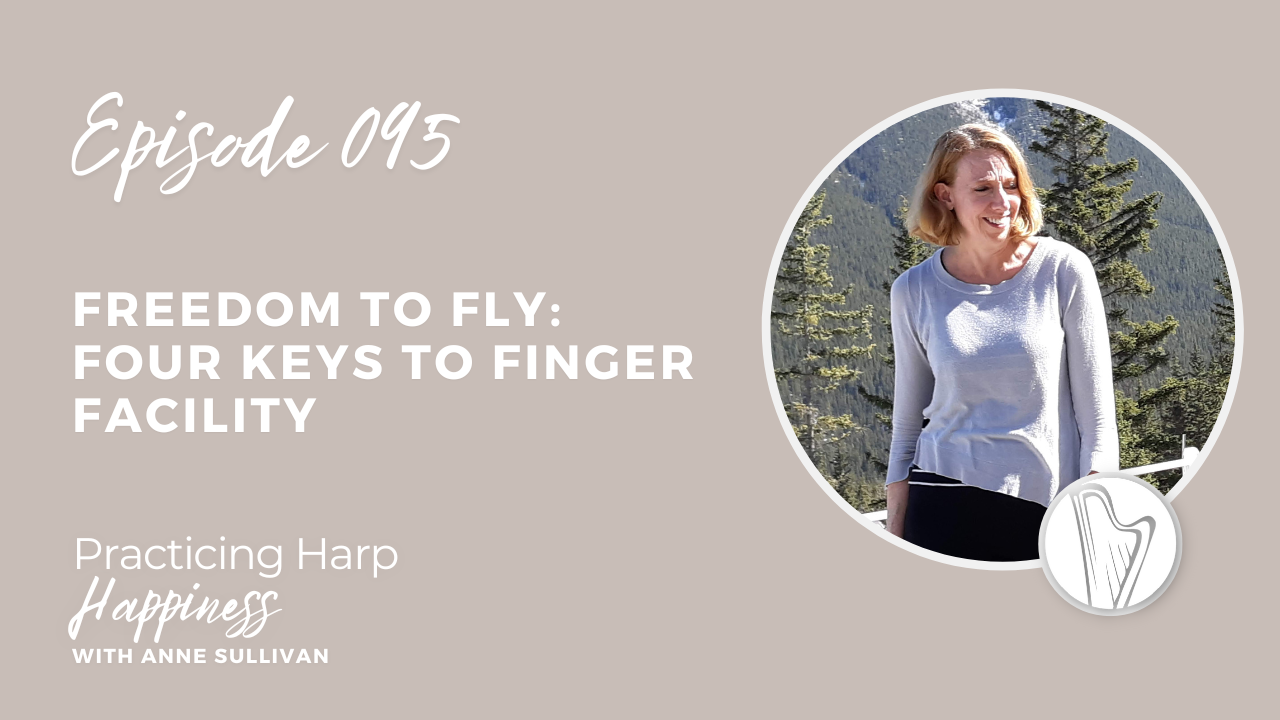
We all know that making music is more than playing the right notes at the right time. It’s about the heart and soul of the music, the feeling we put into it and the feeling that we communicate through it. Unfortunately, no matter how much feeling we put into the music, the actual communication of that feeling relies on our technique. It’s one of those apparent paradoxes in music study. The beauty of your music depends on the fluency of your technical performance, but a technically perfect performance may or may not be a beautiful one.
So we spend, or should be spending, a significant proportion of our practice time strengthening and securing our technical skills. We practice the notes of our pieces slowly and correctly. But often we still miss the connection between slow, technically careful playing and the facility we need to let our music flow. That connection, the missing link between slow and correct and fluid and musical, is what we will be talking about today.
...
#094: 7 Skills That Mark Your Growth
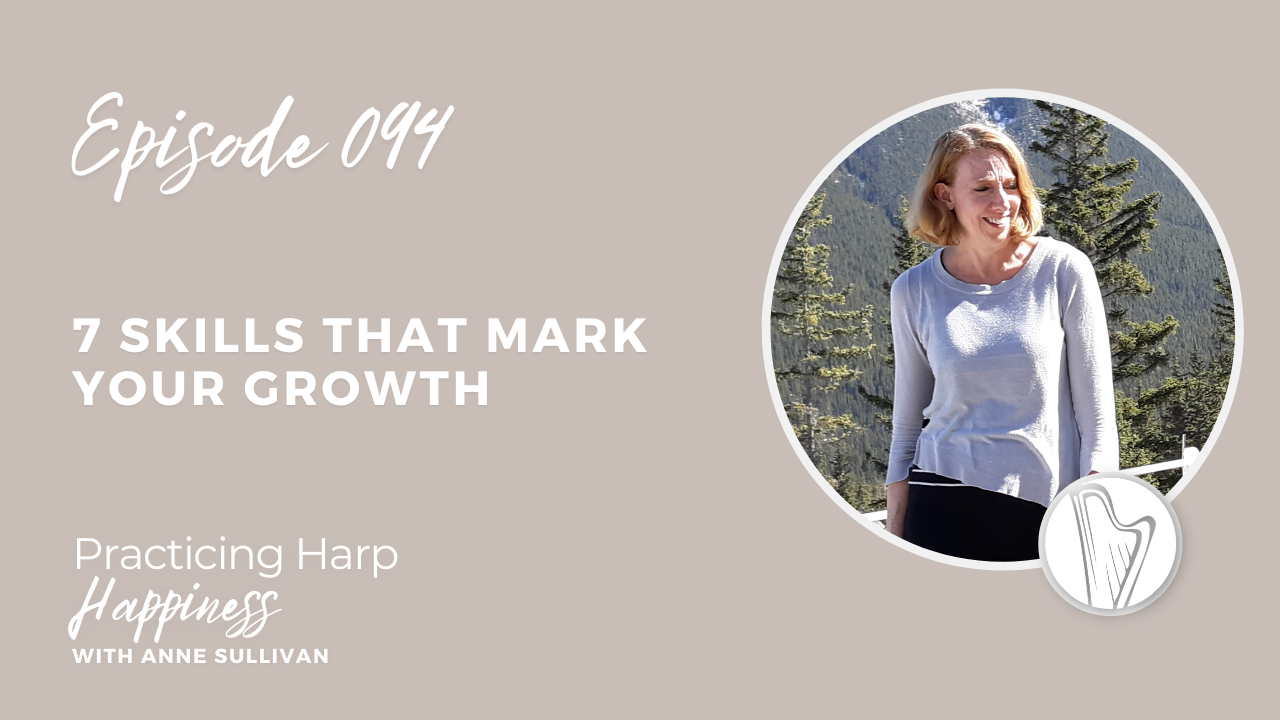
If you’re into computer games, you know it’s all about getting to the next level.
Even if you’re not into computer games, you probably know what I mean. Many computer games are built in levels and moving to the next higher level requires the player to complete certain tasks or amass a specific number of treasures or experience points. Until you can complete all the tasks, find all the treasure and do it in the time allotted without using up all your game “lives” in the process, you can’t move on. You’re stuck at that level.
Lots of gamers, I might even venture to say most gamers, get a little obsessed in the attempt to move up. They play the game over and over again, looking for the secret sequence or hidden treasure that will give them access to the next level. What I find interesting about this phenomenon is that it is so similar to getting to the next level in harp playing.
I know you didn’t think you had much in common with...
#092: Quick Fix: Roll Your Chords Right
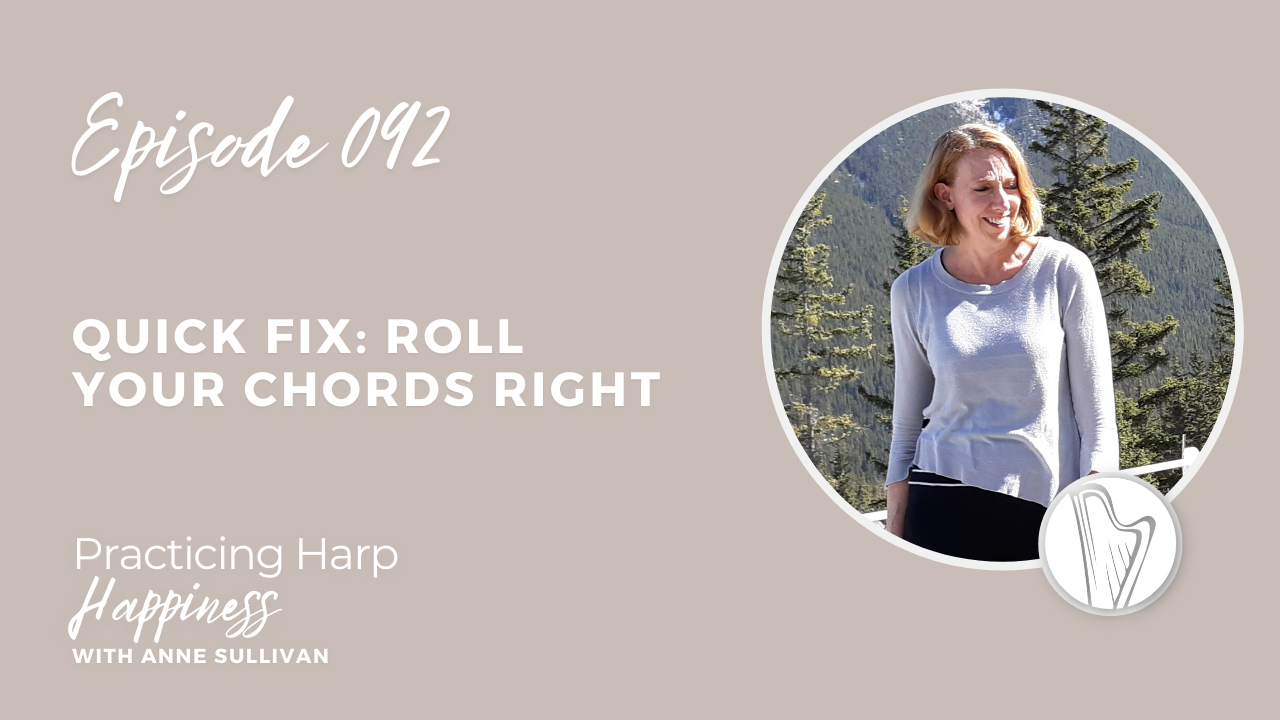
Welcome to a “quick fix” episode of the podcast. I love these episodes because I get to teach at the harp, which is just about my favorite thing. Actually, playing music on the harp would be my favorite, but this runs a pretty close second.
Today’s quick fix is for rolled chords. Rolled chords are one of the most distinctive sounds of the harp, and they are one of our most versatile expressive tools. They can be rolled crisply with lots of energy, or they can be lush and luxurious, almost like musical dark chocolate. But they can be tricky to play well.
We’re going to cover the three most critical factors of rolling chords on this episode: the actual technique of rolling chords, how to get them to fit into your piece and not slow down the tempo, and how to practice the rolls so your fingers sound even and smooth. That’s a lot to do in one podcast show so we had better get started. If you are by your harp you might find it helpful to try these...
#089: Masterclass: The Tempo Pyramid
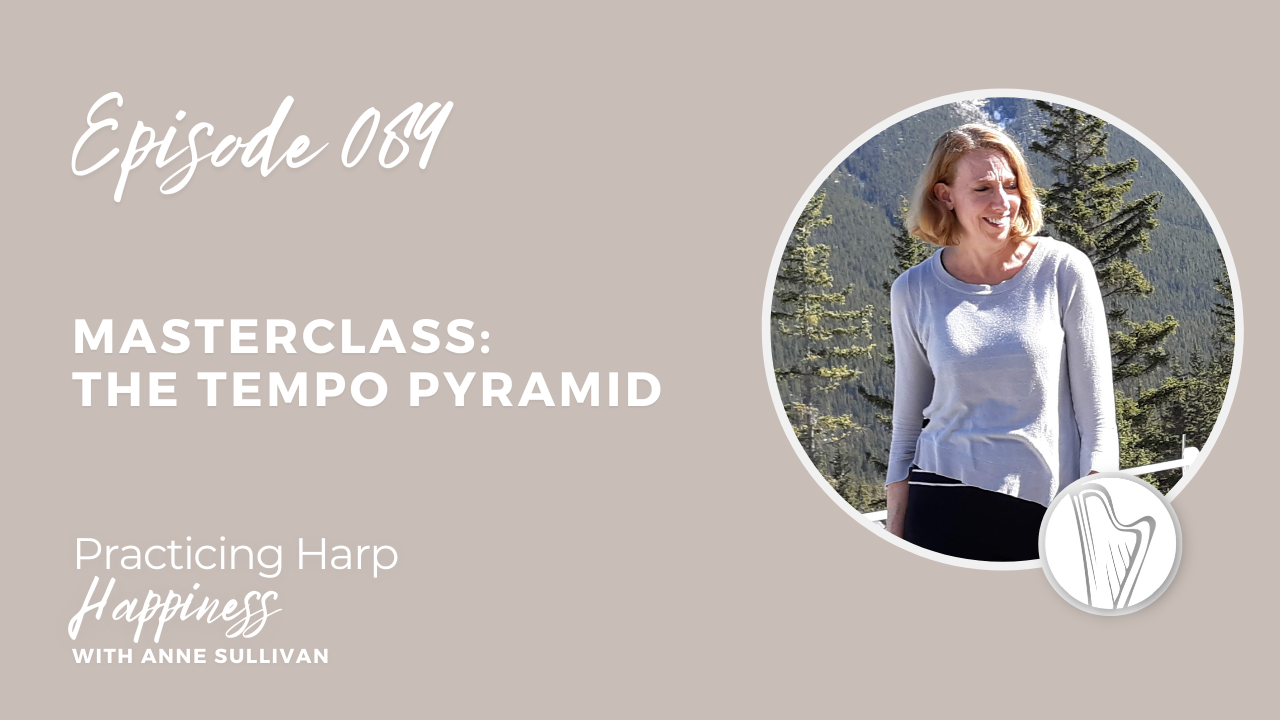
Today’s episode is another in our series of masterclasses, our podcast at-the-harp workshops where you can follow along with me as we do a deep dive into a vital aspect of technique or musicianship.
In this masterclass, we’ll be working on my tempo pyramid. Over the years, I have had lots of requests for reviewing my system for working a piece or a passage so that it actually gets up to tempo. This system is what I call the tempo pyramid and although the concept is fairly simple, it will definitely help you to try it out step by step with me. I won’t just walk you through the pyramid, but I’ll give you some of my bonus tips that will make it even simpler and faster. And faster is our whole focus today: getting the whole piece faster and closer to tempo, making that one difficult passage as fast as the rest of the piece, letting your fingers move faster and with more agility and security.
It’s a lot to do in one podcast episode so we need to get...
#086: The Wrong Way to Practice Etudes - and 3 Right Ways
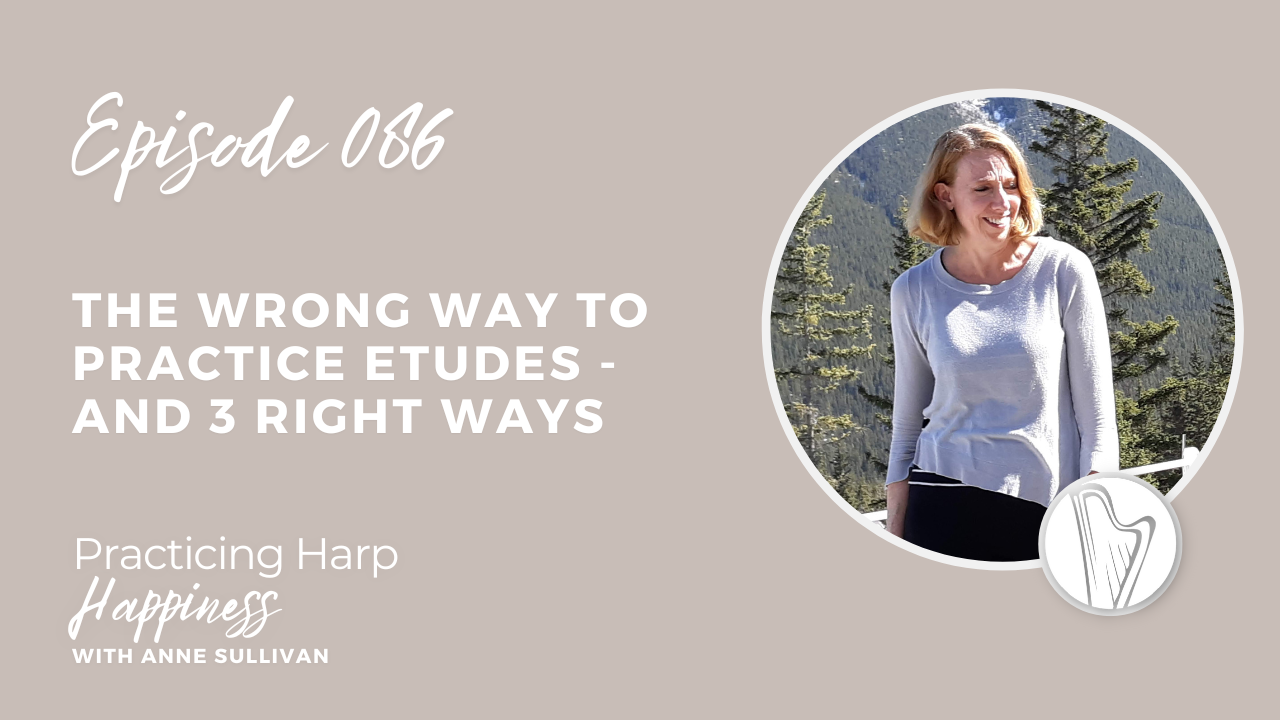
Fundamentals, exercises and etudes are the three pillars of harp technique, or any instrumental technique for that matter. I’m sure this is not news to you, but the reminder never hurts.
Fundamentals like scales, arpeggios and chords form the basis of our technique because they are the patterns most prevalent in the music we play. Exercises help our fingers become familiar with the characteristic patterns that aren’t as straightforward as the fundamentals. Etudes help us put the technical skills from our exercises and fundamentals into a more musical context, a sort of test drive for our technique. Together, they help us develop facility, agility and musical understanding. Pretty powerful stuff.
I know - you knew that already. But like me and most of the harpists I know, you may have trouble fitting all three of those into your practice time. Most of us have limited practice time anyway, and it would be easy to let our technical work crowd out everything else. This is...
#081: Peaceful Hands: How to Look More Graceful and Feel More Relaxed
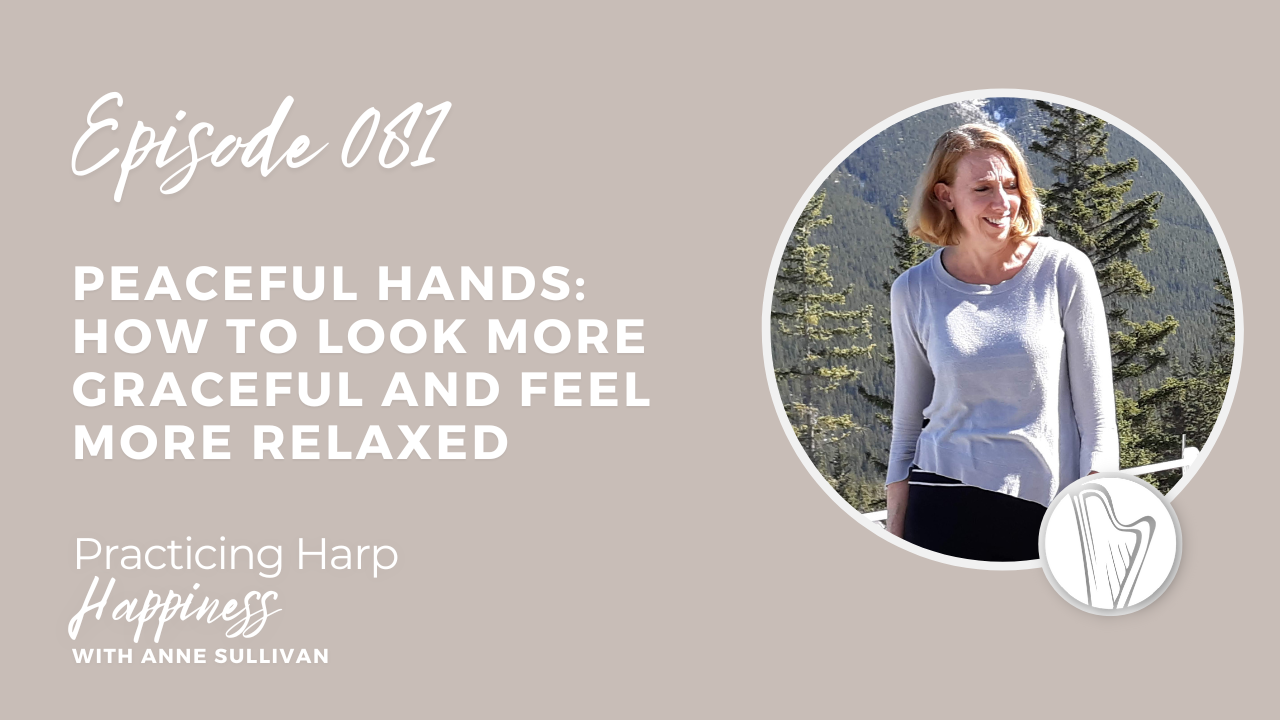
It is a true joy to watch a fine musician play their instrument, whether it's a harp or another instrument. There is a physical flow, a sense that no motion is wasted. You can practically see the mastery they bring to their music.
I would go even further to say that all their physical resources are being used to serve the music. There is an efficiency in their gestures, a grace and a strength that is as visually compelling as their music is. After all, we see a performance as much as we hear it.
If you doubt the truth of that statement, just think about a performance you watched where the performer had distracting facial expressions or gestures. Maybe you were able to ignore them and continue listening, but the music’s spell was likely broken for you. What you saw became more important than what you heard.
This is one reason that orchestras have a uniform dress code, usually formal wear for the men and long black clothing for the women. Most professional...
#077: How to Reach that Unreachable Left Hand Chord
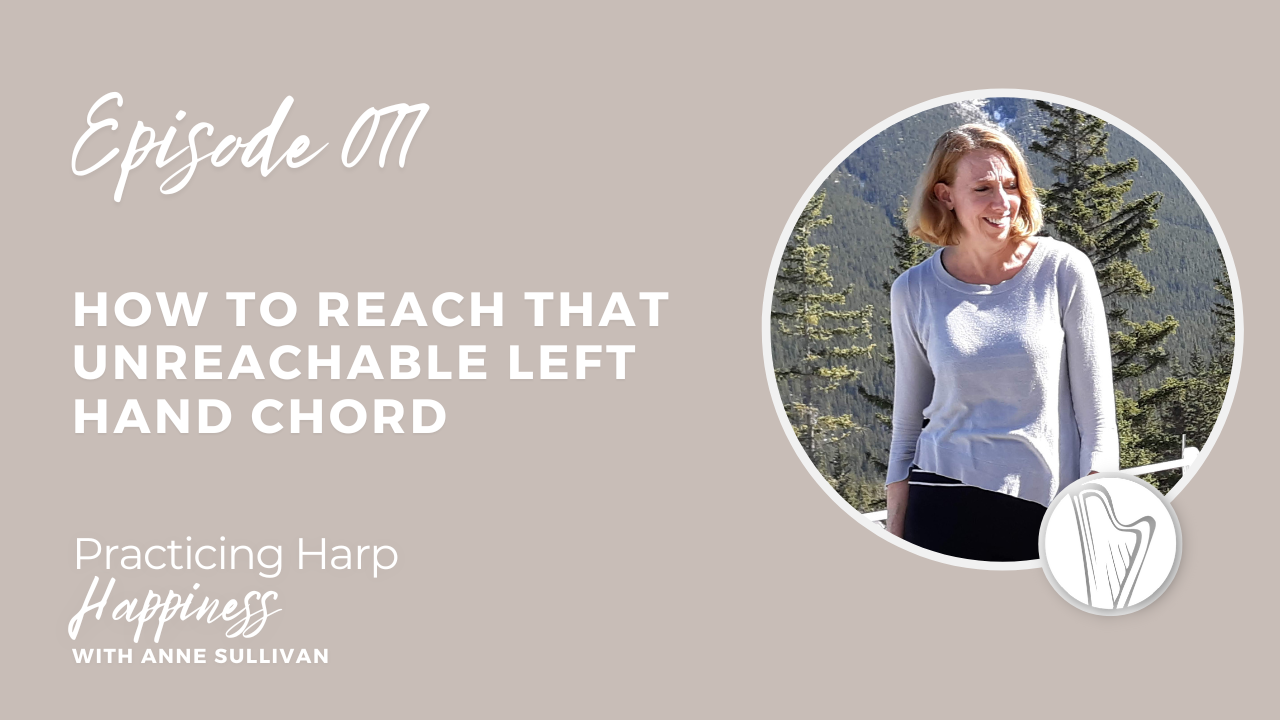
How are you supposed to reach that left hand chord?
You know the one I mean. It goes by a lot of different names, a root-position triad in open spacing, a 1-5-3 chord, or maybe just the chord you can’t ever place accurately. Certainly when we first encounter the chord, it’s a stretch for our hands, but eventually most of us can manage it without too much difficulty.
When we place and play the chord well, it sounds warm and rich. Because it’s a big reach, though, it’s often a challenge to get to the right notes at the right time and play them without hitting neighboring strings.
And that’s a problem because this combination of notes is everywhere in harp music. We encounter it sometimes as a chord, sometimes as an arpeggio. In fact, I often call this the “left hand master chord,” because it is the one chord that, when we master it, solves playing difficulties in so many pieces. We don’t want to have to spend our practice time...
#074: Everyday Etudes: The Right Way to Use What You’re Already Practicing
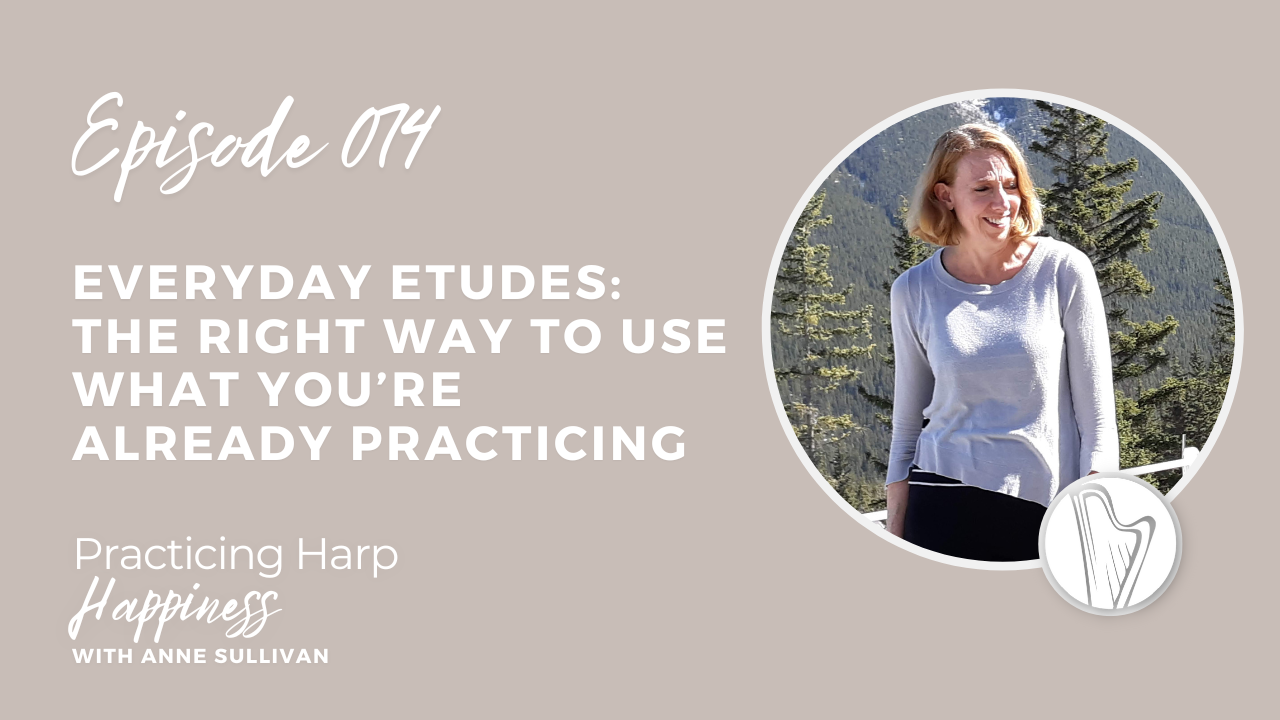
Quick question: hands in the air if you’ve ever decided to skip your technique drills and etudes because you are doing that work already on a challenging passage in one of your pieces.
Yes, I thought so. Everybody’s hand is up, including mine. So we all do it, skip our technique work because we’re short on time and we can get the same benefits by doing double duty practice - working on technique with one of those sticky spots that we need to drill anyway. It sounds like a good idea and a great use of our time. But is it really?
Well, yes…and no.
Exercises and etudes have very specialized functions in harp technique practice. The most significant of these is that they take musical context out of the equation. By eliminating the pressures of the right notes at the right time with all the dynamics, we can laser focus on our mechanics, the way our fingers work, the position of our hands and arms, staying relaxed, and maintaining a healthy posture. Then moving...
#073: Tuning Masterclass: Learning to Listen

If I had to choose one tool that made a harpist’s life easier, I know exactly which one I would choose - the electronic tuner.
I belong to the last generation of harpists that grew up in a world without them, so I know what I’m talking about. Having a device that allowed you to tune in a noisy environment and be confident that your harp is really in tune was new technology when I was a student, and it was a game changer.
Imagine trying to tune your harp on stage while the rest of the orchestra is warming up - violins and piccolo showing off their highest notes, double basses and timpani making anything below middle C inaudible and the brass instruments heroically filling in the middle. Tuning in an orchestra used to be a guessing game.
As grateful as I am for my tuner, there was an unintended consequence to this technological revolution. We harpists have stopped listening.
Consider for a moment how we tune with a tuner. We play a string and then look at the tuner...
#071: Quick Fix Episode: Fumble Free Fourth Finger
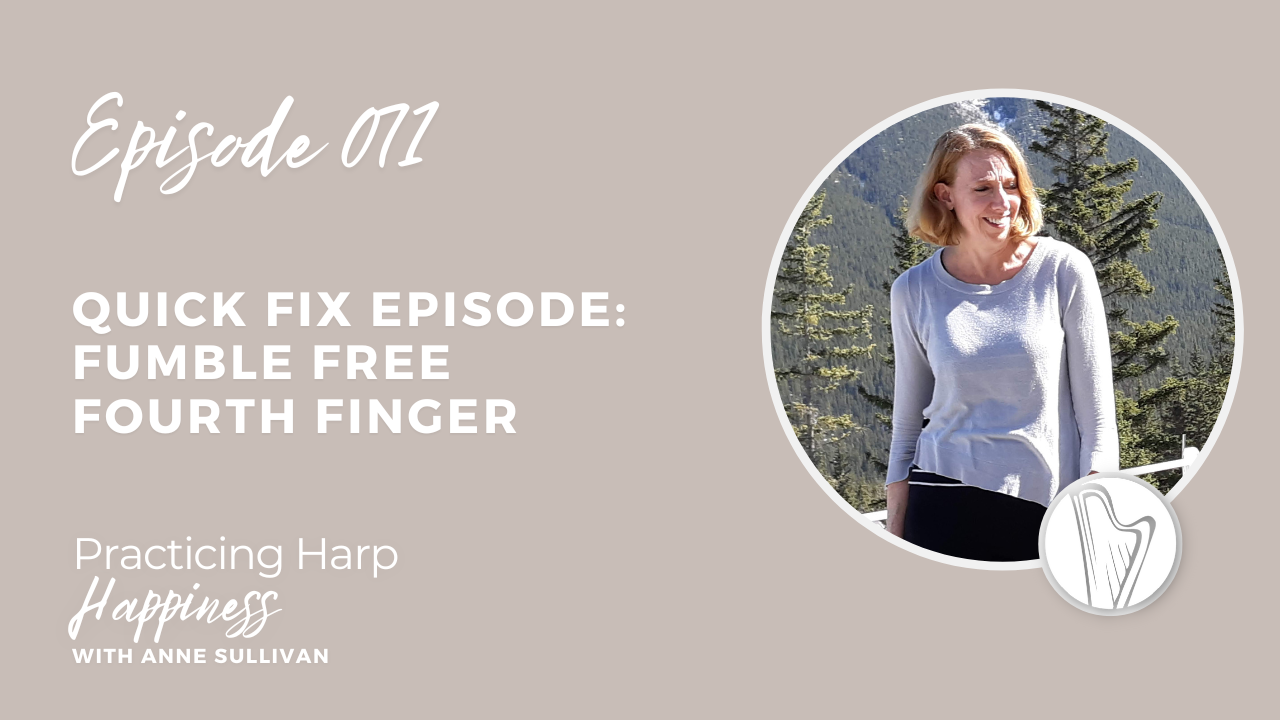
I can almost always tell the skill level of a harp student by the way they use their fourth finger. It’s not the strength of the finger or a lack of coordination. A less advanced player simply avoids using it.
It shouldn’t surprise you if you give it a moment’s thought. Remember back to the very first pieces you learned on the harp, at whatever age you were when you started. They used mostly the thumb and second finger. You learned to place them together and to play them simultaneously and one after the other. Then you added the third finger which brought the additional pleasure (and challenge) of three-note chords. Placing, whether for a chord or a scale passage, was not just one additional finger harder; it was exponentially more difficult.
It’s likely that as you were learning these pieces you were also practicing scales and arpeggios and even etudes that used the fourth finger. But just because you were learning them didn’t mean your fourth...

